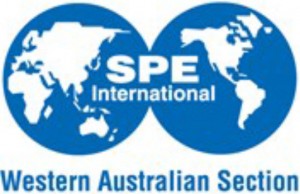
- This event has passed.
SPE Annual General Meeting and Technical Luncheon – Using Automated Reservoir and Production Engineering Tools to Make Quicker Decisions
July 14, 2016 @ 12:00 pm - 2:00 pm
Free – $65.00Abstract:
With the advent and common usage of high resolution tree gauges, downhole permanent pressure/temperature gauges, and continuous flow measurement, many of the common petroleum engineering calculations and analysis tools for production systems can and have been automated. These include: a) Well Test Analysis, b) Well Productivity, c) Static and Flowing Material Balances and Energy Balances. In addition, the use of rigorous wellbore thermal and phase behaviour models allows the two gauges (wellhead and downhole) to be used as a giant differential pressure meter – making it possible to calculate gas rates and water cuts independently of the flow measurements, as well as mid-completion bottom hole pressure (BHP). This technical presentation will outline the basic physics involved in these calculations/analyses, as well as to discuss the implications that these processes will have on instrumentation selection and on engineering work flows.
The crux of the argument for these types of automated systems is that it is much easier for an engineer to check the results than to spend his/her entire day just looking for useful information in the database, then analysing it (or getting someone else to analyse it). Furthermore, being able to see the “big picture” – seeing what skin, perm, productivity and apparent hydrocarbon reservoir volumes are now and how they have changed with time, allows engineers to make quicker, more accurate decisions. The use of automated analysis also reduces bias – the computer doesn’t care what the answer is. This presentation will also include case studies for both oil and gas wells.
Speaker: Chris Fair
Chris received his BS in Chemical Engineering (1994) and his MS in Petroleum Engineering (1997) from the University of Houston. During his time in school, he worked in various positions in the chemical industry and oil patch. These included roles in process operations, project/design engineering, PVT and fluid mechanics research, sales engineering, process control and instrumentation, downhole nuclear tool testing (both in the laboratory and in the field), and laboratory instruction in process control, technical writing, and chemical engineering practices (basically, how not to get “blow’d-up” in a chemical plant). In 1997, he joined Data Retrieval Corporation (the SPIDR folks). While there he worked on expanding the range & types of wells that could be effectively tested from the surface, and worked on increasing the company’s markets, both in the US and overseas. In 2005, he started Oilfield Data Services, Inc., a reservoir/production engineering consulting firm that specializes in well test interpretation and field management of well flowbacks/exploration DSTs. When not running around offshore or overseas, Chris is hard at work on a real-time well evaluation package, designed to track changes in reservoir, completion and wellbore parameters & provide an “early-warning system” to petroleum engineers. Outside of his “day-job”, he sings with the Houston Symphony Chorus.

